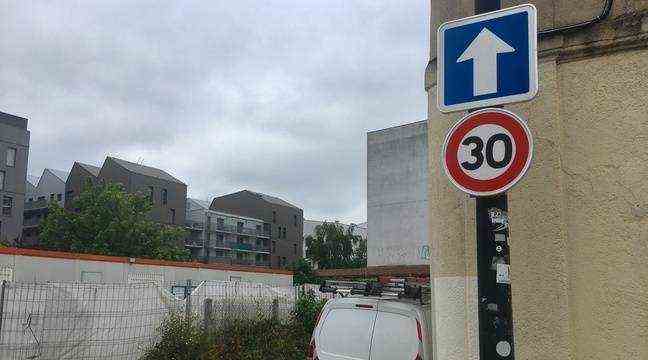This Wednesday, the majority of Pierre Humic (EELV) presented an action plan to put a serious brake on the use of the car in the city and promote alternatives, such as cycling and walking. It highlights that it is estimated that air pollution is responsible for 600 deaths per year in Bordeaux metropolis. Ads that augur changes in habits to move to Bordeaux.
We lift our foot almost everywhere
Limiting to 30 km / h will become the rule in Bordeaux except on a few axes which will remain at 50 km / h, such as quays, boulevards and some penetrating roads. Today 37% of the streets are limited to 30 km / h and it will be 90% in intra and extra-boulevards, from January 2022. “Driving slowly does not waste time, underlines the mayor. Currently, the average speed is 14 km / h by car in Bordeaux against 15 km / h on average by bicycle. “Systematic right-wing priorities and traffic lights will also intervene because we know that they encourage motorists to lower their speed. “We want a more equitable sharing of our streets which have too often become roads”, adds Pierre Hurmic.
Beyond the fight against air pollution, he highlights that studies show an expected drop of -10% to -40% in serious accidents and that noise pollution would be halved. “We are aware that a certain number of our fellow citizens will always need the car to get around, but we are addressing those who can do without it. It is a civic imperative, explained the mayor. In the metropolis, 30% of trips of less than two kilometers are made by car and in the city center, one trip out of two is less than two kilometers, so there is obvious room for improvement. For those who have no choice and have to take their car, he emphasizes the need for better circulation.
This 2020-2026 action plan will be discussed with residents, especially during neighborhood councils. An investigation is also underway for the extension of paid parking to the last remaining free areas.
Pedestrians conquer the city
The pedestrian zone will increase from 40 to 65 hectares by 2023 for the pedestrian zone to become “one of the largest pedestrian centers in France”, assures Didier Jeanjean, deputy mayor in charge of peaceful neighborhoods. He insists on the desire to avoid “through traffic”. The mayor stressed that it would have been easy to treat only the hypercentre but that on the contrary the plan provides that all districts are concerned, specifying that the majority of Bordeaux districts are located less than four kilometers from Pey-Berland. . “The walkable city is not a city without any car but which is no longer designed for the car alone and by the car and which favors soft modes of transport”, he explains. For example, an experiment will be launched on the Chartrons market and rue Notre Dame, with consultation with residents and traders.
Secure tracks to reassure cyclists
The majority announces that 35 kilometers of bus-bike lanes will be built by the end of the mandate, on the basis of the success of the development on the boulevards. “The number of cyclists has doubled and the time of the vine 9 (which borrows the boulevards) has fallen, ”argues the mayor of Bordeaux. With 14 kilometers of cycle paths built in one year, the idea is to go further by removing the discontinuities that exist to offer complete secure routes, for example from the Chaban-Delmas bridge to the Arena. To allow better sharing of the roads and sidewalks, the city will also offer 300 parking spaces (mandatory), against 100 today, for free-floating operators (self-service bicycles and scooters) whose vehicles are often parked just about anywhere.

